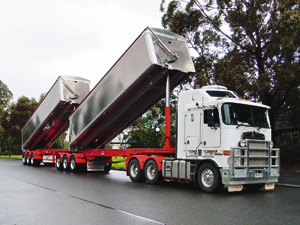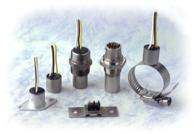
From raising the bed of a dump truck to the massive riser tensioner cylinders used on offshore oil rigs, Telescoping Hydraulic Cylinders are a marvel of engineering. These cylinders are manufactured to offer long stroke lengths and their construction presents challenges for reliable and position sensing, especially in harsh environments.
Some of these challenges are inbuilt to the nature of telescoping cylinders. Furthermore, to mount a magnet to the piston, in-cylinder installation requires gun-drilling the piston rod, which is difficult and adds to the final cost of the cylinder. Moreover, the in-cylinder mounting makes traditional LDT’s susceptible to damage from excessive vibration, radial shock and heat.
Sensor Approach Used in Telescoping Hydraulics
Enter the SL Series Linear Position Sensors from Control Products Inc. Combining some well-known tried and true components of linear position sensors, this sensor technology uses them in a whole new way. The result is an absolute positioning system that is easily mounted internal to the cylinder and highly resistant to shock, vibration and EMI. The sensor design utilizes well known, reliable draw-wire technology coupled with an LVDT. Most importantly it is one of the most robust and versatile overall solutions to linear position sensing for a telescoping hydraulic cylinder available today.
The SL1300 is a perfect example of this new kind of sensor, appropriate to the needs of telescoping cylinder designers with a maximum stroke length of 23 feet. The transducer for the 1300 consists of a cable and spring-loaded spool inside housing. One end of the cable is attached to the moving piston and the other end wraps around the spool. According to the piston’s position, the draw-wire wraps or unwraps around the spring-loaded spool. The spool’s inside diameter is threaded and outside diameter has mating threads. Rotational motion of the spool is thus translated into the linear motion of the LVDT, which produces a signal that is a function of absolute piston position.
A significant benefit to the SL Series Sensor is that it works for any stroke length over its sensing range with almost no modification to an existing design, most notably without core drilling of the rod. This makes position sensing much more practical in long stroke applications, especially telescoping cylinders where internal piston position sensing was not previously possible.
About Linear Position Sensors Manufactured By Control Products Inc.
CPI introduced its first generation of SL series LVDT sensors in 2001 and the company’s latest offering is a family of sensors that uses the same cable and LVDT technology, but the spool and LVDT housing can be mounted outside the cylinder, so no end cap machining is necessary. Instead, the cable attached to the piston is fed through a hydraulic hose that threads into the end cap of the cylinder. The other end of the hose is fitted to a steel enclosure that houses the spool and LVDT assembly.
This setup provides easy installation because all that’s needed is to attach the cable to the cylinder’s piston, thread one hose end into an 18 mm or #8 SAE port in the cylinder, then mount the housing to machine framework of the cylinder itself.
The transducer comes in 4 models to accommodate cylinder strokes up to 120 in. The SL0390 and SL1200 have high shock and vibration resistance and measure strokes to 40 and 120 inches, respectively. The SL0391 and SL1201 are intended as drop-in replacements for in-cylinder mounted magnetostrictive LDTs and measure strokes to 40 and 120 in., respectively. The sensor can be operated with any standard signal conditioner, with 0- to 5-Vdc, 0- to 10-Vdc, and 4- to 20-mA outputs and 10 to 30 Vdc input being most common.
For more details, visit http://www.cpi-nj.com/

